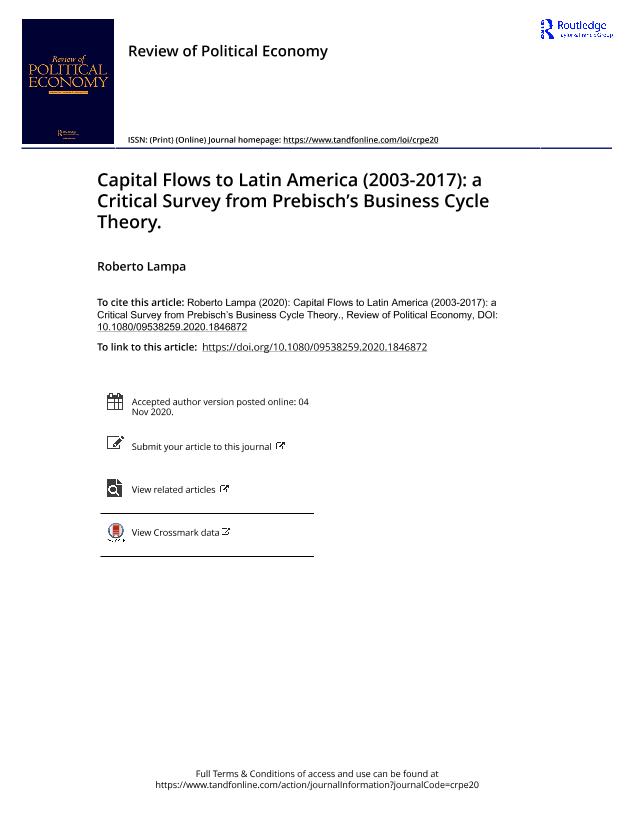Artículo
Capital Flows to Latin America (2003-2017): A Critical Survey from Prebisch’s Business Cycle Theory
Fecha de publicación:
12/2020
Editorial:
Taylor & Francis
Revista:
Review Of Political Economy
ISSN:
0953-8259
e-ISSN:
1465-3982
Idioma:
Inglés
Tipo de recurso:
Artículo publicado
Clasificación temática:
Resumen
The economic literature on capital flows to developing countries has shared two important commonalities since the 1990s. Published works (whether they focus on the external situation or stress the domestic determinants of capital flows) tend to assume a beneficial effect of capital inflows, which leads to an improvement of peripheral institutions, whose deficiencies are ostensibly the main cause of economic turmoil and/or failure in attracting capital flows, in continuity with New Institutional Economics. In doing so, mainstream economists deliberately overlook the asymmetric characteristics of the international monetary system and the persisting hegemony of dollar. Raul Prebisch’s pioneering work on business cycles in Latin America provide an alternative view, one capable of amending the existing mainstream literature. On the one hand, Prebisch stressed the destabilizing role of capital inflows on Latin American economies, particularly short-term speculative capital. On the other hand, Prebisch designed a set of counter cyclical monetary policies in order to contrast capital volatility, particularly during downturns. An analysis of stylized facts shows that, when correctly updated, Prebisch’s theory has remarkable explanatory potential when applied to Latin America’s current economic and financial situation.
Archivos asociados
Licencia
Identificadores
Colecciones
Articulos(SEDE CENTRAL)
Articulos de SEDE CENTRAL
Articulos de SEDE CENTRAL
Citación
Lampa, Roberto; Capital Flows to Latin America (2003-2017): A Critical Survey from Prebisch’s Business Cycle Theory; Taylor & Francis; Review Of Political Economy; 33; 1; 12-2020; 103-125
Compartir
Altmétricas




